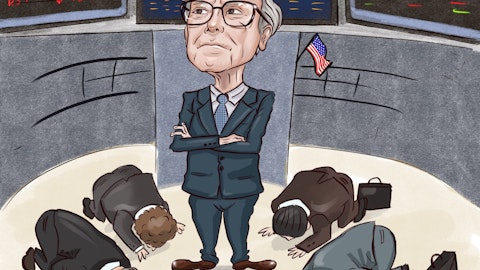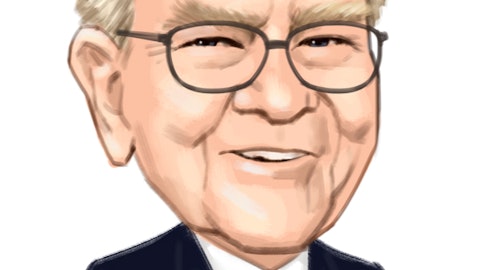Erik Woodring: Great, thank you very much for taking my question. I just wanted to circle back to Toni’s question on Print supplies. You obviously outperformed Print supplies this quarter. So, I just wanted to make sure I understood specifically, what drove the upside in the quarter. And given hard — Print hardware units are declining 20% year-over-year, should — what are the offsets to that as we think about supplies in the Four Box Model? I think you mentioned share gains in pricing. But if you could just go through kind of all the four different factors just to make sure we understand the different drivers, that would be helpful, for ’24. Thank you.
Enrique Lores: Perfect. Thank you, Erik. And thank you because when I was answering to Toni, I missed to mention one of the elements that also helped, which is the easy compare, because last — Q4 last year was not a strong quarter for supplies. So, this also has an impact on the year-on-year compare. If I — if we look at the Four Box Model and the different drivers of supplies, clearly, installed base has continued to decline. So, this is a negative factor. Usage continues to go down, which is a negative factor, though I have to say, continues to be above, especially the home, in space, the references and the projections that we were making before the pandemic. And then, two positive factors that have had an impact this quarter; one is pricing, we have increased prices for supplies, and market share. As I mentioned before, we have continued to grow share for supplies, which has a positive impact on the overall supplies growth. Thank you.
Operator: Your next question comes from the line of Mike Ng from Goldman Sachs. Please go ahead.
Mike Ng: Hey, good afternoon. Thank you very much for the question. I just have one for Marie and one for Enrique. Marie, you guided to PS and Print margins to be at the high-end of the range for the fiscal first quarter and then solidly in the range for the full year. Can you talk about some of the factors that drive that margin normalization for each of those two segments throughout the year? And then, Enrique, within Commercial Printing, I was just wondering if you could talk a little bit about any differences in outlook for A3 versus A4, or are the competitive dynamics very similar. Thank you very much.
Marie Myers: Yes, sure, Mike. Good afternoon. Why don’t I start out and give you some context on the ranges and how we’re thinking about them. So, on PS, as we mentioned, we’d be at the high-end for Q1, and really what’s driving that is just a combination of the mix. I think you heard Enrique talked to that in his prepared remarks, in terms of the higher value and also the improved pricing on — as channel inventories normalizes. As I mentioned earlier, we saw a sequential improvement, and we expect, as a result, to see less promotional pricing. And then obviously, we’ve got the benefits of the Future Ready program that I talked about a moment ago with Toni. Obviously, also working against that are the headwinds that we’ve got with commodity costs and some of that is really what’s influencing the sort of seasonality of the rates that we see in terms of being more solidly in the range as the year progresses.
So that’s sort of Personal Systems. And if you think about Print, similar drivers in terms of just being at the high-end of the range for Q1, and it’s really driven by the profitability that we talked about, the shift in the model with supplies, some of the new business models. Also, frankly, the impact of growth is having an impact on both businesses. Similarly, the impact of the Future Ready. And once again, we also see pricing normalization and we see supplies — there is no change to the supplies outlook to — in terms of low- to mid-single digits. So, all those factors together is what really drives us to see both businesses be solidly in the range for the year, but at the high-end of the range for Q1. I’ll turn it to Erique.
Enrique Lores: Yeah. And just in your question about the office market in Print, two key comments. One is we have continued to shift change from A3 to A4, especially in Commercial — in large Commercial customers. We think this is driven by the fact that we expect to see less printing — people in the office. And therefore, they have reduced the printing volumes that they were expecting and they need less production type of products. So that has been one change. Second, in terms of both A4 and A3, we continue to see an opportunity to grow share. We did it in this quarter in A3, and we have started to grow our share in A4 in several geographies. We did it in North America — in Americas. We did it in several countries in Europe. We did it in China. And we know we have some work to do, but we expect to continue to drive that during 2024.





